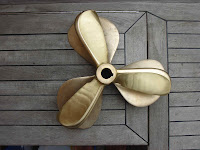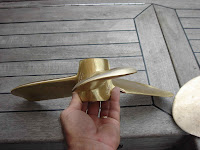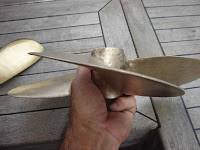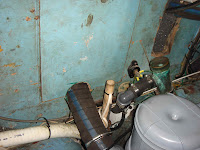 |
| Simpson Bay Lagoon |
Even though the motion is gentle and we're accustomed to it, it is always there. Our dining table and the galley counters have raised edges, called fiddles, to keep dishes from sliding off, and we've unconsciously learned to time our pouring of beverages so that they don't go astray. When the swell comes off the beam and grows large, perhaps as a result of a storm hundreds of miles away, the adjustments that we make are less automatic, and life becomes more challenging. Leslie has often joked about the fact that we don't have to do any special exercises for our abdominal muscles -- routine activities like sitting, standing, and walking around our constantly moving boat keep us well-toned.
There are a couple of places where we spend time that offer all-around protection. One of these is Port Egmont, on the south coast of Grenada
Our other favorite spot for all-around protection and flat water is Simpson Bay Lagoon in St. Martin . It's quite a contrast to Port Egmont. It's larger, and there are hundreds of boats sharing it with us. They range from small cruising boats like Play Actor to huge megayachts sporting helicopters on deck. One had a 40 foot sloop, as big as our boat, hanging from davits, ready in case their charter guests wanted to go for an afternoon sail. They're generally available for charter, if you're interested in spending a couple of hundred thousand dollars for a brief respite from winter weather.
Simpson Bay Lagoon also features two large marine supply stores and innumerable specialty shops to cater to a boater's every need. The island is completely duty-free, and prices on most marine supplies are lower than in the U.S. St. Martin compiling a project list, to be undertaken on our next visit. This year was no exception, and we're steadily working our way through the list as we enjoy the calm water and ready access to all sorts of shore-side attractions, including several gourmet grocery stores.
We are also able to get high speed Internet access in the anchorage. We subscribe to a service that uses fixed cellular technology to provide access all over the island -- even on an anchored boat. What a luxury, and we get a good night's sleep every night in the bargain, because of the wonderful protection afforded by the high ground all around us.
Hope everyone had a Merry Christmas, and the crew of Play Actor wishes you all a Happy New Year.

















